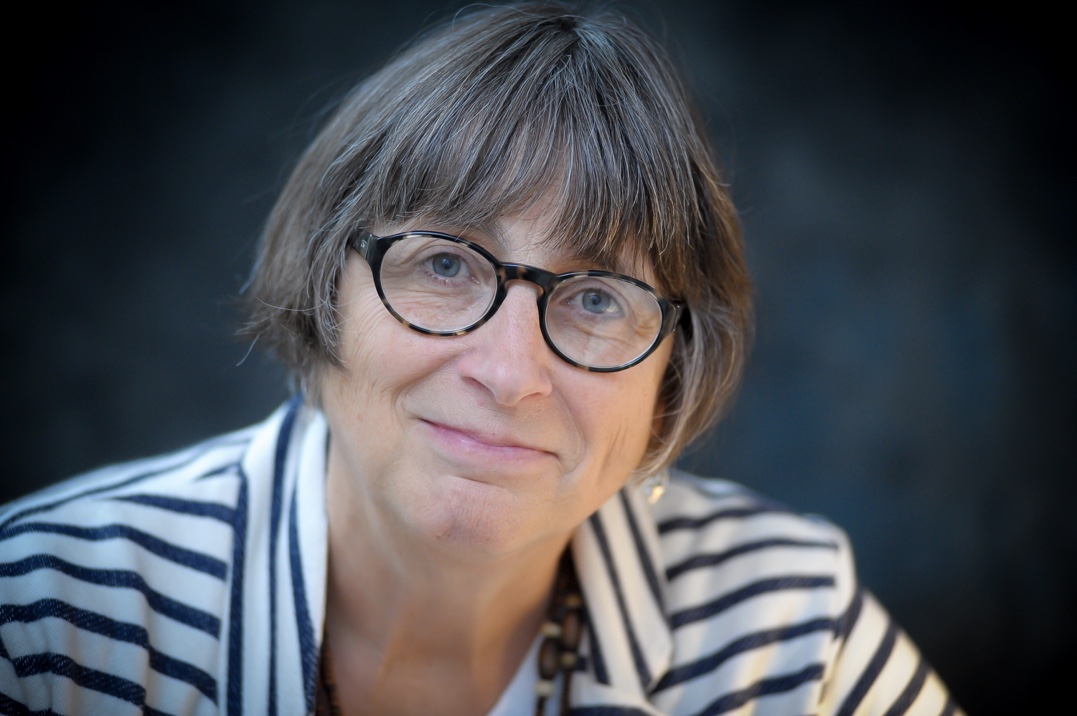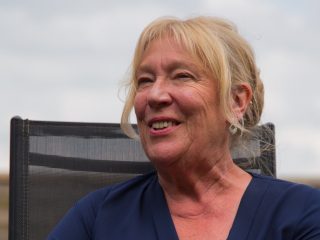
Melinda Maxwell
This month the oboist and composer, Melinda Maxwell, is featured in the Journal. The extensive catalogue of fantastic oboe solo and chamber works below spans over three decades and shows the wonderful versatility of the oboe in so many ways.
Any requests for scores and parts that are not Emerson publications please contact Melinda: melindamaxwell@newoboemusic.org. All notes below are written by Melinda Maxwell.
Pibroch (1981)
Publisher: Emerson Edition Ltd (2007) No; 528
Instrumentation: oboe and drone
Premiere: First performance at the 1982 Huddersfield Contemporary Music Festival by Melinda Maxwell
The art of pibroch is a fifteenth century tradition of Scottish ornamentation that was handed down through the generations by ear, and only notated at a much later date. It is music for the bagpipes and a folk art belonging to this instrument and its environment; some of the music is related to old Scottish songs and ballads whose lyrics portray stories of rural life. In Pibroch the ornamentation is the very character of the music and also a harmonic starting point, dominating throughout, until at the end it is transformed into another melody entirely.
Endless Chain (1990)
Instrumentation: oboe, soprano saxophone, percussion (four drums, bass drum and tuned crotales)
Premiere: First performed on Radio 3 by Melinda Maxwell, John Harle and Simon Limbrick in 1991 for a late night recital.
This piece is a setting of an anonymous Italian basse dance ‘Rédi Spagna’ from 1465. The musical language sustains a quasi 15th century sound world. There are two tempi that alternate in an endless chain of events. One is a dance with dotted syncopated rhythms and the other a slower, wistful, and more melodic section. In the dance the oboe and saxophone hocket and spin around each other and in the slower music they converse in longing calls and responses. The piece ends with a fragmentation of the dance music that slows and softens to end.
Elegy (1994)
Instrumentation: oboe and piano
Premiere: Elegy was completed in May 1994 and first performed by Melinda Maxwell and John Lenehan as part of a BBC Radio 3 live recital at St John’s Smith Square in London.
The work is serial in technique, taking as its starting point a twelve note row that reveals a richness of possibilities, by turns reversing, fragmenting and permutating into ever changing patterns. The piece moves in and around a fixed harmonic point of reference, occasionally moving away, but always returning. There are two melodies, made up of the same material, but different in character. The piece, if you like, has a binary form, where each statement of each melody plays out its story in succession. Ultimately, the more doleful melody seems to speak with more presence and this permeates the piece and concludes it; hence the title Elegy.
The composition lends an insight into my reflections on the nature of the oboe and its hauntingly expressive sound world. It was completed the day John Smith, leader of the British Labour Party died and so the title seemed doubly appropriate.
Song for Sidney (2001)
Publisher: Emerson Edition Ltd (2015) No; 702
Instrumentation: oboe and two drone oboes (or piano)
There are two versions of this piece (and they can be read from the one score). The initial version is for solo oboe (with two drone oboes) and the later version with a piano accompaniment was made at the request of the Royal Academy of Music as repertoire for their annual oboe prize.
Sidney refers to Sidney Sutcliffe, the charismatic orchestral British oboist who was principal oboe with the London Philharmonic Orchestra (from 1945), the Philharmonia (from 1949), and the BBC Symphony Orchestra (from 1964). He taught at the Royal College of Music from 1961, and I studied there with him as a postgraduate student in 1976. He died in 2001. I was very saddened at not being able to attend or to perform at his memorial concert, and it was agreed by Edwin Roxburgh (who was organizing the concert) that I could give my tribute by composing a piece for him instead, which I duly did. Song for Sidney was first performed by students of the RCM at St John’s, Smith Square, London in October 2001.
The song consists of certain letters taken from his name that are also pitch names. S in German spells Eb, and this note becomes a crucial pivot point in the melodic line. Two variations enrich and elaborate the line after which the initial song re-emerges, but slightly changed. The two ‘echo’ oboes sustain a note each, a C and an F, and create a harmonic backdrop, or landscape, for the song as it journeys to a resting place. I wanted to end on an optimistic ‘note’ and F sharp appears for the first and last time at the very end, leaving I hope a feeling not of closure but of an opening of hope and anticipation for his memory and legacy to continue.
Crane Dance (2008)
Instrumentation: double reed ensemble: six oboes, two bassoons, and one contra bassoon.
Premiere: First performed by RNCM students on RNCM Woodwind Day October 2008. Conducted by Timothy Reynish
Cranes are beautifully elegant birds particularly in their exquisite mating dances, but also in the chevron formations they make when migrating. They are very vocal and sing and call to each other during their activities. In many mythologies the crane has cultural significance and in Asia it is the symbol of happiness and eternal youth. I wanted to celebrate this graceful bird and a double reed ensemble seemed the perfect sound. The piece is in one movement and plays out a ritual dance between groups of oboes and bassoons. The music hockets in a majestic tempo in irregular rhythmic patterns and gradually becomes more relaxed and calm finishing with a long and softening rallentando.
Cadenzas to Mozart’s Oboe Concerto K.314 (2008)
Publisher: Emerson Edition No; 588 (2009)
This publication consists of three examples of cadenzas for each of the three movements with suggestions for the ‘pick-ups’ in movement three. They attempt to show, in the style of Mozart, ways of constructing a cadenza using the thematic material of each movement. They are designed to be constructions that can be altered, adjusted, or used as a basis for extemporization and as starting points for inventing and developing further material.
Cross Lines (2011)
Instrumentation: Oboe and Accordion
Premiere: First performed by Melinda Maxwell and the composer Howard Skempton in a concert at the RBC in March 2012 featuring the music of Heiner Goebbels.
I have performed music by Goebbels on a number of occasions and most particularly his piece Songs of War I have seen (2007). Before completion of this piece several small groups of London Sinfonietta players collaborated with him in exploratory sessions that involved improvisation. His positive stance on improvisation led me to consider writing my own piece based on one of his melodies as a starting point for harmonic and melodic interactions. He agreed and sent me some material.
The piece is in one movement and begins with a Goebbels melody followed by a section involving improvisation with indications in the score to show the parameters in which to do this. In effect the piece is in two sections beginning with the melody and then transforming into an improvisatory section. The accordion accompanies with chordal figurations.
Ein Dankeschön Vorliegenden für Hansjörg (2013)
Instrumentation: for groups of oboes (doubling Cor Anglais)
Premiere: First performed and composed in June 2013 at the RNCM in thanks to Hansjörg Schellenberger for his tenure as RNCM International Tutor in Oboe.
The piece consists of two groups of oboes, one a chorus group of four parts and the other a solo group, consisting of oboes doubling CAs. The number of oboes can be indeterminate but need to be balanced. The piece begins with the chorus oboes establishing a chordal backdrop against which the second group play a melody in solos that start at different times so the music becomes phased. The next section is rhythmic and faster in tempo with the cor anglais players gradually introducing the slower version of the initial oboe melody thus bringing it into the foreground and closing the piece with it.
Reflections (2013)
Instrumentation: Duo for Oboe & Violin
Premiere: First performed by students at the RNCM for a forty years celebratory concert of the RNCM in 2013.
This is a short fanfare piece with two contrasting sections of material that alternate. The first is slow and spacious and the second is fast and staccato in irregular patterns. The piece ends with a triumphant rhythmic unison on a major third.
FRACTURES: Monk Unpacked
Instrumentation: septet for oboe, clarinet (doubling bass clarinet), horn, violin, cello, double bass and percussion (marimba, three tom-toms high middle and low, suspended cymbal, bass drum)
Premiere: First performed by Birmingham Contemporary Music Group in November 2015 conducted by Oliver Knussen. The piece was commissioned by BCMG with financial assistance from individuals through BCMG’s Sound Investment Scheme. The piece is dedicated to Oliver Knussen, and Jackie and Stephen Newbould of BCMG.
Two experiences influenced my state of mind in 2015. One was the completion of a Masters degree in Jazz in 2013 and the other was an untimely fall from a stage in 2014 when I broke my right leg. Certain thoughts around these experiences began to come together. During my jazz studies I inevitably explored the music of Thelonious Monk (d.1982, a brilliant American composer and pianist) whose diverse music broke new ground making links for me to modern contemporary music. Monk’s famous piece Round Midnight with its shifting chromaticism led me to explore its major/minor harmony, and making improvisations on it, I found a way into my own harmonic material. My broken leg got me thinking about fractures and fissures, broken bones and broken lines, hence the melodies in this piece being interrupted and split.
There are two sections within the single movement entitled Chase and Bone Waltz. The horn and percussion tend to signal events, and there are dialogues between duets of instruments and the piece resolves with a short Chorale. The double bass has the first and last word.
Ancestral Traces
Instrumentation: baroque oboe, bass viol and harpsichord
Premiere: Commissioned by Peter McCarthy for Music in the Village, and first performed by Gail Hennessy, Peter McCarthy and Pawel Siwczak in St Mary’s Church, Walthamstow, London on February 21 2019.
The piece traces a particular melody by Bach, the Sinfonia from the Easter Oratorio BWV 249 and certain melodic contours in the Sequenza VII by Luciano Berio (1969). The two differing musical styles (although both centering on a B tonality) co-exist beginning tentatively from a modern perspective to invoke a past musical style. Both styles are taken on a journey in order to explore a taste of oboe character; the baroque oboe sampling modern multi-phonic sounds in a search for a melody. The investigations made by the baroque oboe gradually yield a baroque style pertinent to Bach and culminates with a melodic celebration in the key of the Sinfonia, B minor.
The piece could be played on modern oboe, double bass and harpsichord.
About Melinda Maxwell
Melinda Maxwell read music at the University of York and studied in Germany with Ingo Goritzki and Helmut Winschermann. She has performed as oboe soloist at many national and international festivals and is frequently heard on BBC Radio 3. Many works have been written for Melinda including by Simon Bainbridge, Sir Harrison Birtwistle, Philip Cashian, Anthony Gilbert, Simon Holt, Jo Kondo, Nicholas Maw and Howard Skempton. Melinda is also an accomplished composer herself writing several works for oboe and also various ensemble pieces with strings. Her septet Fractures was commissioned and performed by the Birmingham Contemporary Music Group in 2015 conducted by Oliver Knussen.
She has made many recordings. Her solo CD Melinda Maxwell in Manchester: Music for Oboe from the RNCM released in 2007 for Dutton Recordings was CD of the Month for BBC Music Magazine. Another in 2009 features the first recording for Oboe Classics of Birtwistle’s 26 Orpheus Elegies and was awarded the top rating in the Guardian and BBC Music Magazine. Her latest CD Blue Bamboo: jazz and other improvisations was released with Oboe Classics in January 2017.
In addition to her work as a chamber musician and recitalist, Melinda is Principal oboe of the Endymion Ensemble, Birmingham Contemporary Music Group and Garsington Opera. She has played as frequent guest Principal with many orchestras and ensembles; including the London Sinfonietta, Britten Sinfonia, and over the years has played with major orchestras as sub-Principal. She has been in regular demand in the session TV/Film world and was featured in all the Inspector Morse series for TV.
She has taught as oboe tutor at the Royal Academy of Music (1995-2001) and Trinity College in London. She was RNCM Head of Woodwind (2001-2003) and RNCM Consultant in Woodwind Studies (2003-2018). She also coaches at the Britten–Pears School for Advanced Musical Studies and is Oboe Tutor for the National Youth Orchestra of Great Britain.
In June 2013 she gained an MMus in Jazz Performance from the Royal Birmingham Conservatoire. In September 2017 she began a PhD in Composition, Improvisation and Performance.








